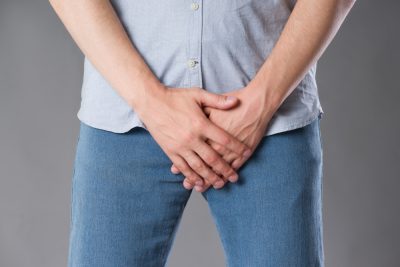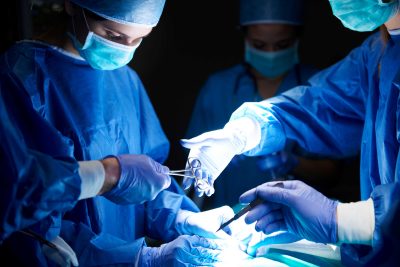Polyorchidism is a condition that happens in men where they have more than two testes (also referred to as gonads or testicles) from birth. It is a sporadic condition. It is so rare that the total reported cases sum up to about 200.
In most of these cases, the victims report having three testes, while there are less than ten cases where the man has up to or over four testes. Inside the scrotum is mostly where you will find the extra testicle.
However, there are times where it may be located at an unusually higher area, which is around the groin area. In this case, it would be nearer to the abdominal wall or inside the abdomen fully.
Polyorchidism does not usually come with any health condition, although it could make you a little more susceptible to having testicular cancer.
Do symptoms accompany polyorchidism?
There are usually no symptoms that come with having this condition, asides having an extra testicle. In cases where there are symptoms, it might come as pain in your lower abdomen or scrotum, or a noticeable mass in your scrotum.
Most times, the extra testicle or testicles are located on the left side. These additional testicles usually have a smaller size than the other two normal testes, which is why it can stay undetected for an extended period.
Does polyorchidism impact fertility?
Polyorchidism doesn’t usually affect fertility. For instance, in one study, a man who already had three children told his healthcare provider that he was noticing a mass in his scrotum, although it was not causing him any pain.
After this, his doctor carried out some imaging tests but did not recommend that he undergo any other treatment, because this condition did not present any health risk.
Research has suggested that these additional testicles would be able to work in a similar way to the normal testicles.
When there is a cause for concern is if after being diagnosed with this condition, you start experiencing some struggles with fertility. If this happens, ensure that you visit a fertility specialist as soon as possible.
It is a sporadic occurrence for the extra testicle or testicles to cause problems with the functionality of the normal ones. However, if you feel like it is interfering with your normal testicles, you should go for a fertility test to be sure.
Causes of polyorchidism
 Researches are still ongoing to know what exactly causes polyorchidism as it is still not fully understood. It is challenging to research the origin of this condition because it is very rare. However, there are theories behind why it occurs.
Researches are still ongoing to know what exactly causes polyorchidism as it is still not fully understood. It is challenging to research the origin of this condition because it is very rare. However, there are theories behind why it occurs.
One theory suggests that this condition is a result of the genital ridge being abnormally divided during the early development stages of a male fetus. The gonadal ridge, which is also known as the genital ridge, develops during the first two months and is the precursor to the testes.
The reasons are still not known as to why the genital ridge divides in a way that an extra testicle develops within the scrotum or in the groin area.
This condition is not linked to any other anatomical or developmental abnormalities. Research suggests that there is no environmental or hereditary connection to this sporadic condition.
How polyorchidism is diagnosed
When it comes to a case where polyorchidism does not present itself with any symptom, it is most likely discovered when you take a self-exam or opt for something more professional like a physician’s exam.
This physician’s exam will show an extra mass inside the scrotum. The diagnosis of polyorchidism is usually made when a man is at his adolescent stage. Despite that fact, it is still possible to be diagnosed with this condition in your 30s or older.
It is also possible that the extra testes would be discovered while carrying out a surgery that is not linked to this condition, like surgery for an inguinal hernia. An inguinal hernia occurs when tissue pushes past a feeble area of the muscles in the abdomen.
While carrying out an external exam and a suspicious mass is discovered, further imaging tests would have to be carried out to find out if it is an additional testicle, a tumor, or another thing. An MRI test may be done to examine the pelvic region, along with an ultrasound.
These two screenings are non-invasive, and they do not cause any pain. Magnetic resonance imaging (MRI) involves the use of a robust magnetic field and radio waves to form images of soft tissues inside your body.
In comparison, ultrasound involves the use of sound waves to form images of the organs along with other tissues inside your body.
By carrying out these testes, your healthcare provider would be able to find out the precise location and size of the extra testes, along with providing essential information about them, which includes their vascularity and also if there are any traces of testicular cancer.
Types of polyorchidism
After a lot of research, healthcare professionals have found out that there are two different cases of polyorchidism, which are type A and type B.
For type A, the additional testes are sapped by a ductus deferens, which is the part that carries sperm to the ejaculatory duct. In this case of polyorchidism, the extra testicle still has the potential to function like the other two testicles. Most reported cases of polyorchidism are type A.
For type B, the extra testes are not sapped by a ductus deferens, which means that it does not have reproductive potential.
Treatment for polyorchidism
If there are no signs of cancer or further issues linked to the extra testes, there would be no need to undergo any medical procedure or treatment. After a diagnosis of polyorchidism has been made for you, you will need to monitor the condition by going for a checkup annually.
This annual checkup will help you know when there is a new development of symptoms, and also undergoing ultrasounds and MRIs as recommended by your healthcare provider.
It is still being considered by healthcare professionals whether or not extra testes should be removed. This is because it can make a man more susceptible to having cancer.
While carrying out a biopsy or imaging tests and cancer is suspected, your doctor would recommend the removal of the testes, which is a procedure known as orchiectomy.
Sometimes, your healthcare provider will also suggest that the abdominal testes be removed as these are the ones that are most likely to become cancerous.
Removal of cancerous testicles
 If cancer is detected in your testicles, then the next step would be to remove either one or both of them.
If cancer is detected in your testicles, then the next step would be to remove either one or both of them.
An orchiectomy is a procedure that is often used to treat testicular cancer, although it can also be carried out if an injury or infection impacts the testicle. There are times where it is part of the treatment for prostate cancer.
Instead of carrying out a biopsy of the testes which would cause cancer to spread more, your doctor would do what is known as a radical inguinal orchiectomy.
It is called radical because it involves the removal of the spermatic cord as well as the tumor and testicle. The spermatic cord has lymph vessels and blood that could promote the spread of cancer to other parts of the body.
While carrying out a radical inguinal orchiectomy, your doctor will cut a small area directly above your pubic area. This is where the testicle will be pushed out. This surgery will not harm your penis or scrotum, which is the sac providing cover for your testes.
The whole process takes about 60 minutes, and your doctor closes the cut with stitches or staples. After about seven days or thereabout, your doctor would then remove the stitches.
Most times, after this surgery, you would be able to go home, but in rare cases, you will be required to stay in the hospital for a short while.
How to check for testicular cancer
It is important that you do a monthly self-exam to determine if you have cancer of the testicles.
These are the steps to carry out the self-exam;
- You will first use your two hands to grab a testicle, then roll it between your fingers. While doing this, ensure that you feel if there is any lump or bump, which can sometimes be pea-sized. Ensure you check all the sides well along with the bottom and top.
- Next, gently give the testicle a little squeeze; it should have a spongy feel. Try to check if the testicle is unusually tender or firm, or if it has lost its spongy texture. Ensure you also check whether the testicle is heavier, larger, or smaller than it usually is.
Conclusion
If you have polyorchidism, you should regularly check yourself for testicular cancer either by carrying out self-exams or visiting your healthcare provider for a more professional exam.
If you do not notice any symptoms or a test doesn’t identify cancer, then polyorchidism does not pose any life-threatening problems.








COMMENTS